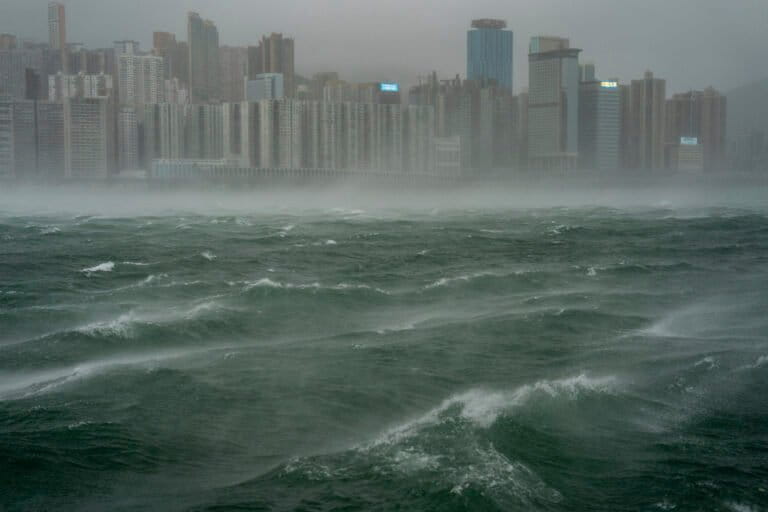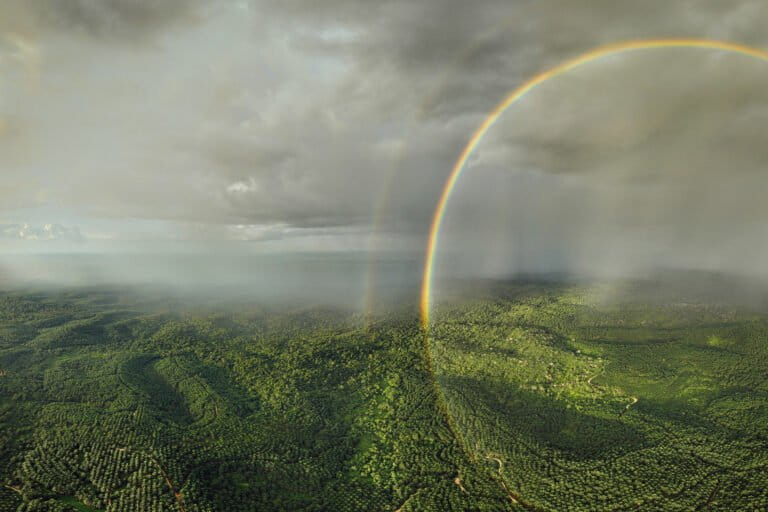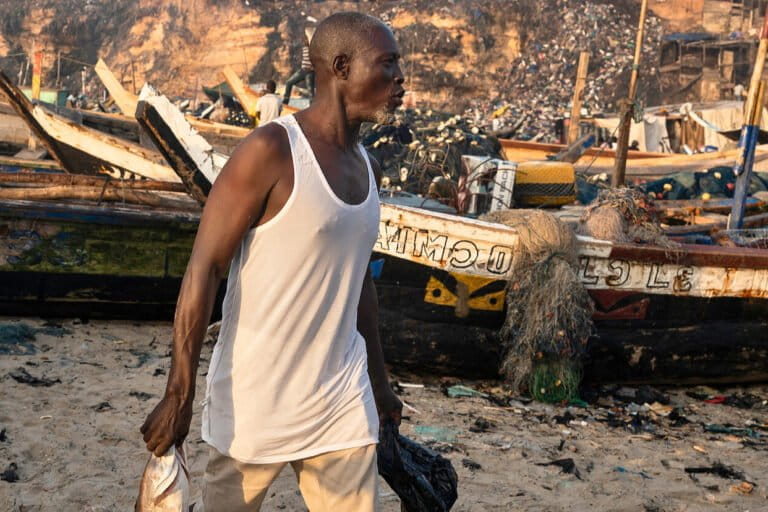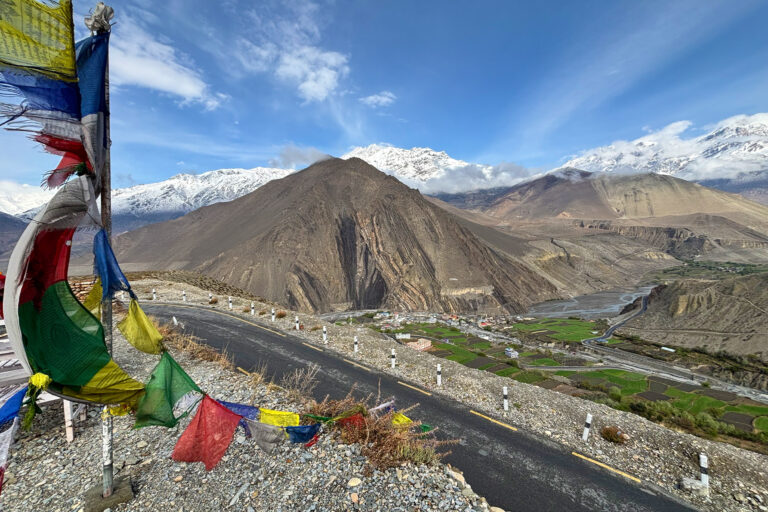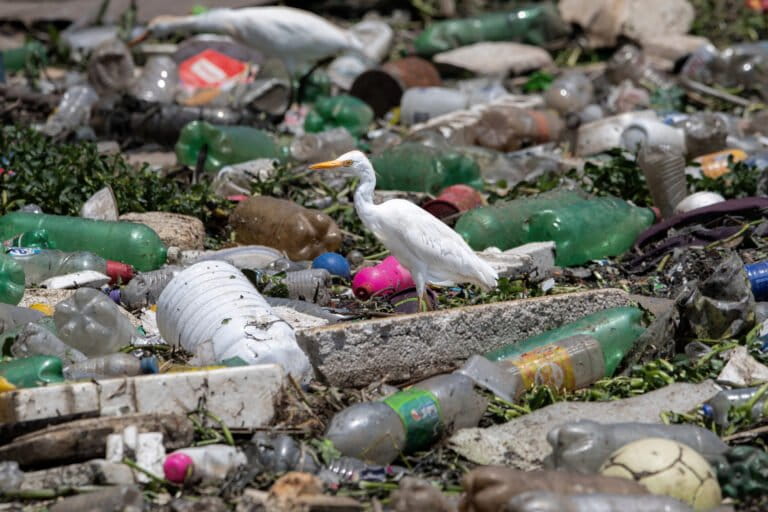- A new private port for public use near Punta Arenas, a city in southern Chile’s Magallanes and Chilean Antarctic Region, has been approved for multipurpose services, such as the development of green hydrogen and salmon industries.
- The region has recently attracted a lot of attention due to its enormous green energy potential.
- The company concerned told Mongabay that this port will reduce the need for developers of green hydrogen and other projects in the region to build their own private ports as there is currently a limited capacity.
- Environmental organizations and local residents fear the port’s construction and operations will impact marine ecosystems and boost industries that will likely cause greater environmental impacts, such as contamination from salmon farms.
The Chilean government has recently approved a new port project in Magallanes and the Chilean Antarctic Region, an area that recently attracted a lot of attention due to its enormous green energy potential. The port will transport infrastructure to expand green hydrogen, a colorless gas produced without fossil fuels, and allow for faster and more efficient transport of salmon from the farms in the region, said a government official.
Meanwhile, some Indigenous residents and environmental organizations are raising concerns about potential environmental impacts of the port on the region’s marine ecosystems and species, such as humpback whales.
In April, the Regional Commission for the Use of Coastal Border (CRUBC in Spanish) unanimously approved the Cabo Negro port project, proposed by the investment company Inversiones PPG SpA, which will be located 28 kilometers (17.3 miles) from the regional capital of Punta Arenas.
A company presentation seen by Mongabay said it will include a 400-meter (1,312-foot) dock for loading and unloading supplies and servicing vessels, along with a 2-hectare (5-acre) landfill. The total length of the pier is approximately 1,100 m (3,609 ft) from the beach. Jan Gysling, the project manager for Nortev SpA, a company that is supporting PPG in the development of the project, told Mongabay that, although it has not yet been defined, the total area of the project will most likely be approximately 30 hectares (74 acres) of land and 5 hectares (12.3 acres) of sea.
Local officials expect the port to help boost industries producing green hydrogen, a renewable energy source, and other industries in the region.
Local residents and FIMA, one of the main environmental justice NGOs in Chile, told Mongabay that they know little about the company’s plans but they are concerned about the potential environmental impacts on the region’s unique and fragile ecosystems. There has also been some confusion as many initiatives linked to green hydrogen in Magallanes are also called Cabo Negro — named after an industrial park of the same name in the region.
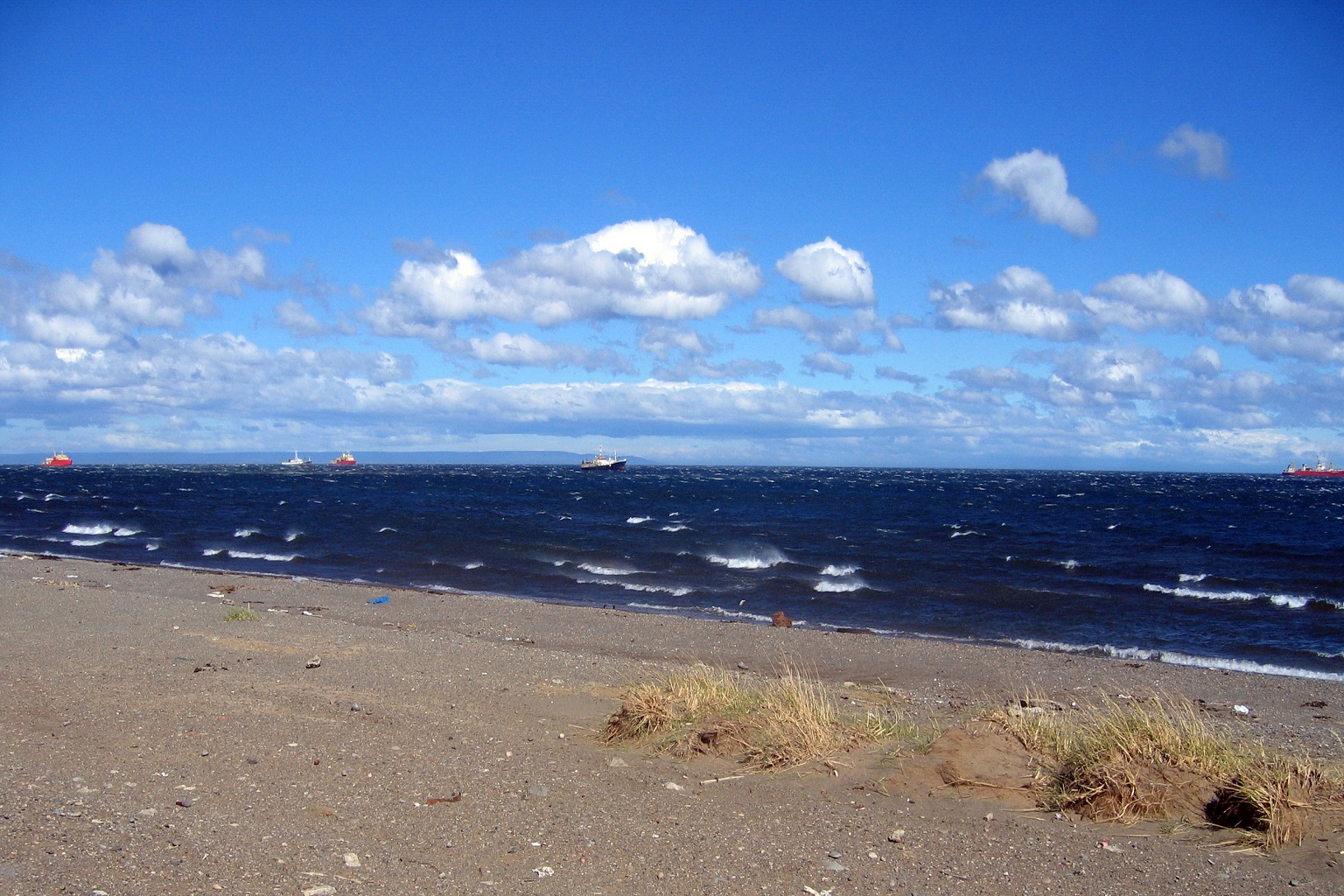
Environmental concerns
While there are still unknowns about the specific environmental impacts of the port, as the company has not yet obtained an environmental impact assessment (EIA), Leticia Caro, a leader of the nomadic seafaring Indigenous Kawésqar community in Magallanes, told Mongabay over WhatsApp messages that she is worried.
After centuries of exploitation, humpback whales (Megaptera novaeangliae) recently returned to the Strait of Magellan, a sea route off the coast of Magallanes that connects the Atlantic and Pacific oceans. In 2003, only 40 whales were reported in the area, but by 2022, scientists had recorded as many as 190. Given that its main threats are entanglement in fishing gear, contamination from nearby salmon farms and ship traffic, Caro said she fears a port of this size will cause a disturbance to the whales and other species that are key food sources for local communities.

“The Magallanes region has very unique and fragile ecosystems that depend on certain conditions for their functioning and maintenance over time,” Felipe Pino Zúñiga, an environmental lawyer and FIMA’s program coordinator, told Mongabay via WhatsApp messages. “This could be threatened if its environment undergoes significant changes, not only due to the construction of a mega-port, but also due to an increase in the frequency and magnitude of maritime traffic; background information that, to date, we have no information on.”
Gysling from Nortev SpA told Mongabay the environmental impacts of both the construction and operation stages will be determined in detail during the EIA. He added that the project consists of a transparent pier on piles and does not require a breakwater, so its impact on the seabed, waves and currents is “minimal compared to an opaque jetty.”
Green energy and salmon farming in Magallanes
At the end of 2020, the Ministry of Energy unveiled its national hydrogen strategy, which highlighted its interest to transform Magallanes into a global hub for green hydrogen projects — a carbon-free fuel produced through the electrolysis of water using renewable energy sources. According to a study by the Ministry of Energy published in March 2021, the Magallanes region has the capacity to produce 13% of the world’s green hydrogen.
After the port was approved by the CRUBC, Cristina Salazar, the acting director of port works at the Regional Ministerial Secretariat (Seremi in Spanish) of Public Works in Magallanes, praised the developers for their vision to create a port that can develop the green hydrogen industry by shipping infrastructure to project sites. This will also help the development of salmon, tourism and general logistics industries, said Salazar in the Chilean aquaculture and fishing newspaper Mundo Acuícola.
However, several organizations supporting social causes, such as sustainable social development, Indigenous rights and feminism, wrote in a public statement that green energy projects, facilitated by the construction of this port, will “exploit [their] wind, land and seawater for desalination, without national regulations and without considering our ways of life, turning Magallanes into a sacrifice zone that exports renewable energy at the expense of its people and its nature.”
According to PPG, there are no settlements within the immediate vicinity of the project and there have not been any consultations with communities yet. However, the environmental impact study (EIA) includes citizen participation opportunities “that will be implemented when appropriate,” they said in a WhatsApp message to Mongabay.
Another cause for concern is brine, a byproduct of desalination, which is often a necessary step before using seawater for green hydrogen production. It is a highly concentrated saltwater solution which has the potential to disrupt marine ecosystems if discharged directly into the sea.
“This has a great impact on the great livelihood of the territory since it is known that this changes the marine pH and kills microorganisms and larvae that are very important in the food chain,” said Caro. “This is not only an impact on our [Kawésqar] community, but on all those who have their livelihood linked to the sea.”
Moreover, in Magallanes, there is currently a lack of port capacity to be able to receive the wind farm components required to implement green hydrogen projects, Gysling said. This has “forced” the developers of these mega-projects to construct their own private ports. But the Cabo Negro project plans to reduce this need.
“Our project, as a private port for public use, proposes an alternative shared port infrastructure that would allow developers to build their projects without having to construct a large logistics port each, thereby significantly reducing the environmental impact associated with the development of this industry,” Gysling said.
Another concern in the region is the salmon farming industry, due to the high pollution it causes. According to Chile’s Undersecretariat for Fisheries and Aquaculture, in March 2025, there were 129 salmon farms in Magallanes. Kawésqar communities have accused the farms of taking over the fjords where their sacred areas and fishing grounds are located and polluting their territory.
“Our territory does not deserve such a level of affectation,” Caro said. “The salmon industry is one of the worst industries today that preys on the territory. We do not want more.”
Banner image: Hydrogen storage tanks are visible at the Iberdrola green hydrogen plant in Puertollano, central Spain, March 28, 2023. Image courtesy of AP Photo/Bernat Armangue.
Citations:
Grammatiki, K., De Jonge, N., Nielsen, J. L., Scholz, B., Avramidi, E., Lymperaki, M., Hesselsøe, M., Xevgenos, D., & Küpper, F. C. (2025). Environmental impact of brine from desalination plants on marine benthic diatom diversity. Marine Environmental Research, 210:107207. doi:10.1016/j.marenvres.2025.107207
Panagopoulos, A. (2022). Techno-economic assessment and feasibility study of a zero liquid discharge (ZLD) desalination hybrid system in the Eastern Mediterranean. Chemical Engineering and Processing – Process Intensification, 178:109029. doi:10.1016/j.cep.2022.109029
Reda, B. Elzamar, A. A., AlFazzani, S., & Ezzat, S. M. (2024). Green hydrogen as a source of renewable energy: a step towards sustainability, an overview. Environment, Development and Sustainability. doi:10.1007/s10668-024-04892-z







